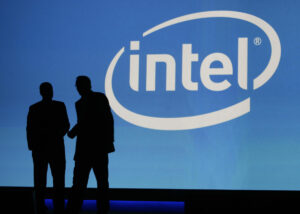Intel’s Crisis: Navigating the Storm after Gelsinger’s Departure
Intel (NASDAQ: INTC) finds itself at a crossroads as it grapples with a significant leadership change and a dramatic decline in its stock price, now down over 50% this year. The recent ousting of CEO Pat Gelsinger has sent waves of uncertainty through the company and raised questions about its future direction in the semiconductor landscape.
Gelsinger’s ambitious initiative to pivot Intel towards becoming a US-based competitor to Taiwan’s TSMC, which includes expanding into third-party semiconductor manufacturing, is now shrouded in ambiguity. Receiving $7.8 billion in funding from the CHIPS Act was a major milestone for Intel, yet the company’s foundry operations are reportedly struggling, with its largest client still being Intel itself—a scenario that begs the question: can the foundry model survive under current conditions?
The Foundry Dilemma
Despite scoring contracts with major players like Microsoft and Amazon, the pressure is mounting on Intel to reconsider its foundry ambitions. Analyst Vivek Arya from Bank of America suggests the possibility of Intel fully separating its design and manufacturing units. However, such a maneuver is fraught with complications—especially if they intend to retain those critical CHIPS Act funds.
Mario Morales from IDC highlights a critical stipulation attached to the CHIPS Act funding: Intel must maintain manufacturing control. This essentially means that abandoning its fab facilities, or fabrication plants, would not only jeopardize funding but could also lead to more significant operational woes. It’s a precarious predicament for a company already fighting to reclaim its standing in the semiconductor market.
The Path Forward
Following Gelsinger’s directives, known as IDM 2.0 (Integrated Device Manufacturing 2.0), Intel was on a path to rejuvenate its manufacturing capabilities and chip design processes. Yet, the reality of a formidable challenge looms over the company, compounded by years of underinvestment and missed market opportunities. The mobile chip wave, for instance, was a tide Intel simply couldn’t ride.
Gelsinger had a limited timeframe to overturn the course of Intel since taking office in 2021, and while progress has been made in areas like chip design, building new manufacturing facilities is a lengthy and costly endeavor. The company is now at a decisive junction: Should it continue down the path Gelsinger set, refocusing on in-house chip production, or divest its foundry aspirations entirely? Each decision carries its own set of consequences.
Analyst Perspectives on the Future
Bob O’Donnell, an industry analyst, argues that the challenges Intel faces are entrenched and not immediately solvable. He points out that the steps Gelsinger initiated were indeed the right ones to put the company back on track, but the turnaround requires time—something that appears to be in short supply.
Citi’s Chris Danely emphasizes the financial burdens Intel may face if it continues to pursue its foundry ambitions. He warns that significant personnel layoffs and budget cuts could be necessary if the company opts to scale back. The risk, however, lies in losing billions every quarter, leading some analysts to suggest that Intel may be better off shedding its foundry aspirations entirely, even if that means returning CHIPS Act funds to the government.
As industry dynamics shift, Intel must navigate with caution. In a competitive landscape where customer trust is paramount, especially when potential foundry clients are also competitors, the path ahead is not merely about operational choices—it also hinges on strategic partnerships and market positioning.
The Road Ahead
The question now is whether Intel can strike the right balance between maintaining its manufacturing capabilities and pursuing the lucrative foundry business without alienating potential customers. As the company searches for a new CEO to lead it through these tumultuous times, the semiconductor giant stands at a pivotal moment that could redefine its trajectory for years to come.
In conclusion, while Intel has the legacy, expertise, and even the financial resources bolstered by governmental support, navigating this intricate maze of opportunities and challenges is easier said than done. The semiconductor industry’s future is bright, but for Intel, it’s a race against time and competitive forces. Investors and stakeholders alike will be watching closely to see what steps the company takes next.

